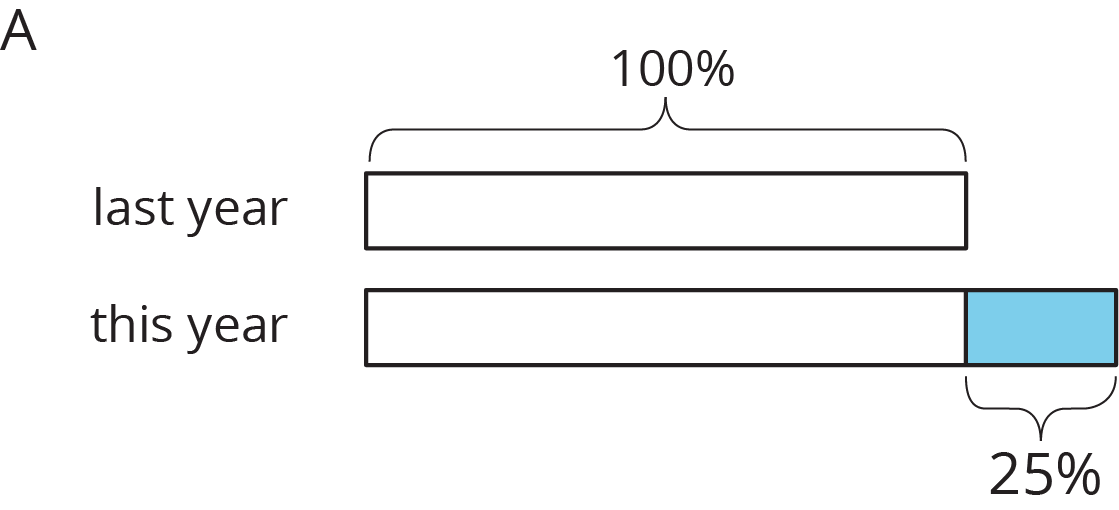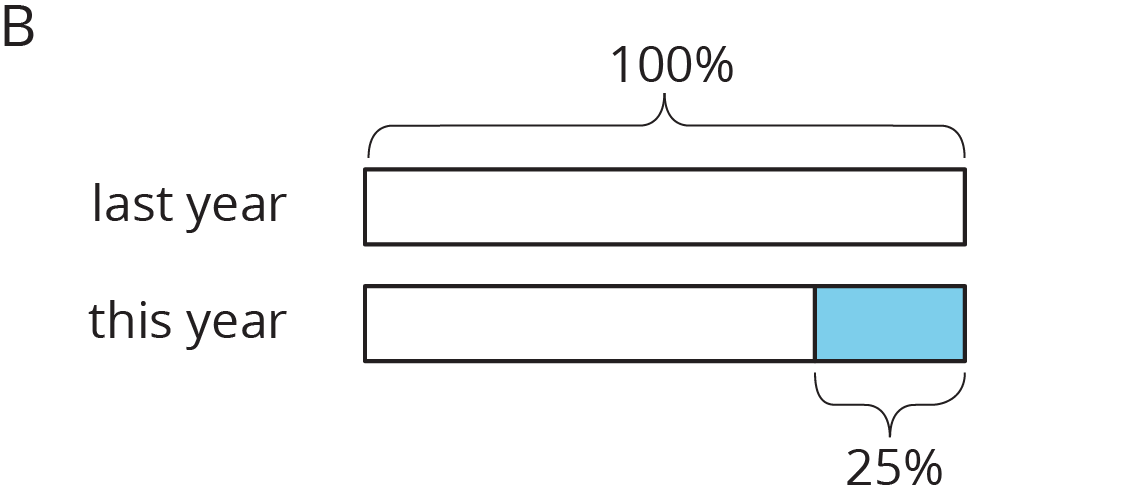Imagine that it takes Andre \frac34 more than the time it takes Jada to get to school. Then we know that Andre’s time is 1\frac34 or 1.75 times Jada’s time. We can also describe this in terms of percentages:

We say that Andre’s time is 75% more than Jada’s time. We can also see that Andre’s time is 175% of Jada’s time. In general, the terms percent increase and percent decrease describe an increase or decrease in a quantity as a percentage of the starting amount.
For example, if there were 500 grams of cereal in the original package, then “20% more” means that 20% of 500 grams has been added to the initial amount, 500+(0.2)\boldcdot 500=600, so there are 600 grams of cereal in the new package.
We can see that the new amount is 120% of the initial amount because
500+(0.2)\boldcdot 500 = (1 + 0.2)500






